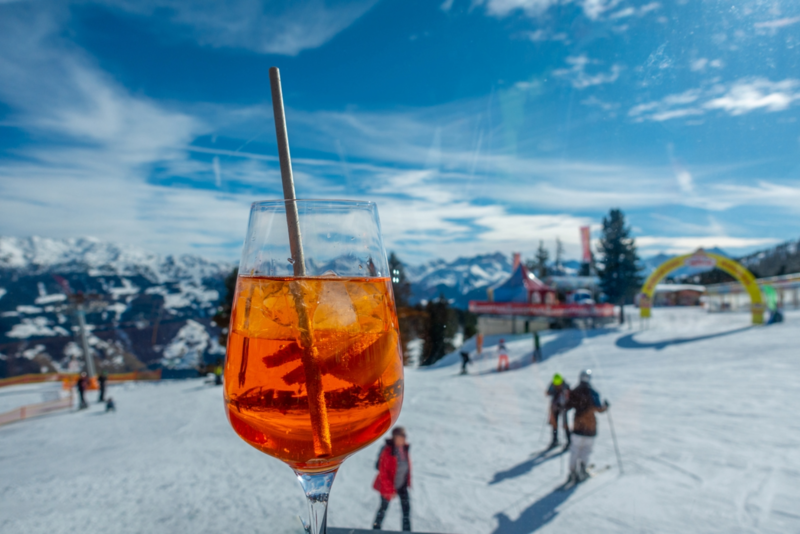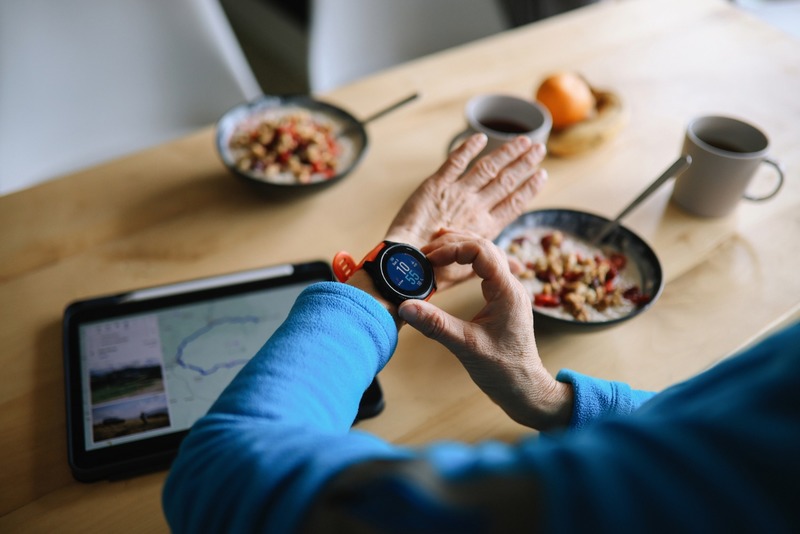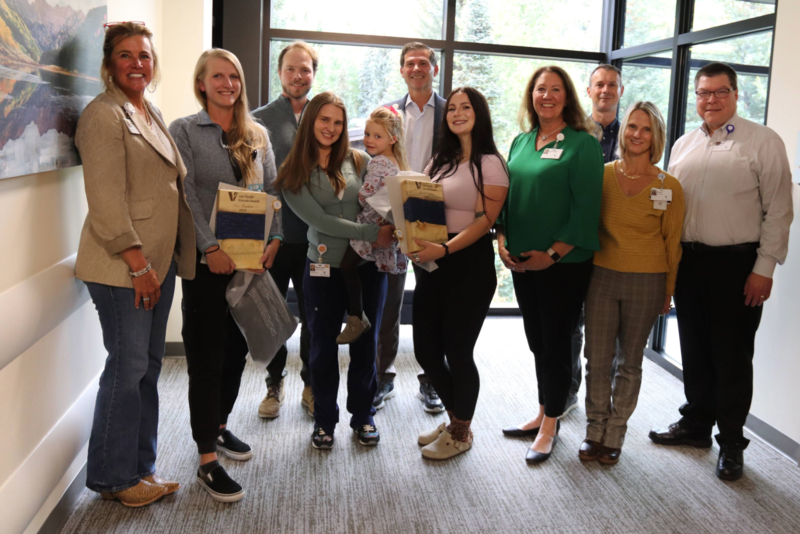News
Meant to Be
Dr. Barry Hammaker | General Surgery
WHETHER IN A WAR ZONE OR nestled safely in the mountains Dr. Barry Hammaker puts family first. It was Hammaker's own father who initially sparked his interest in being a doctor.
My dad was sick he had a bad back injury when I was a teenager Hammaker said. (Because of this) I got a little introduction to things both positive and negative about his care.
Originally from Kansas Hammaker was a member of the army reserves in college and went to Georgetown Medical School on a military scholarship. Once on active duty he volunteered to join a Special Forces organization for doctors trained in both combat and practicing medicine. Following the events of September 11th Hammaker was among the first military doctors sent to Afghanistan in late October 2001. While not exactly excited about going to the Middle East Hammaker felt fulfilled in his job as a
combat doctor.
This is what I'd been training five years for Hammaker said (It was) very satisfying to be helping what I consider the greatest patients and patriots of the world.
Hammaker did several tours of both Afghanistan and Iraq until he retired from the army in 2006. After returning home for good he moved to Vail with his wife and young son. Again the decision was family-oriented. Spending months at a time away from his family while on duty was not what he wanted. Hammaker is now a general surgeon at Vail Valley Medical Center. He finds that the obstacles when dealing with emergencies in a mountain town are similar to those he dealt with while in the military.
When I was in the army I was worried about the weather and transporting patients...making decisions as to how much treatment I should give the patient at that time before they got on the helicopter to go to the bigger hospital Hammaker said. Who should go with them? What is the route? Is it better to drive or fly? A lot of those are the same challenges that we have here in
the winter.
Hammaker now feels the same sense of camaraderie among his staff that he did with his fellow soldiers. He said patients often remark at how nice everyone at VVMC is and how quickly a patient coming into the emergency room is taken care of. It's the community-like environment that makes Vail and the hospital ideal for the doctor. His wife agrees.
I don't think I could find a better place to work or to be Hammaker said. My wife loves it here. She said to me 'You have to do whatever you can to stay here because we are not moving.'
Dr. Jeffrey Resnick | Plastic Surgery
DR. JEFFREY RESNICK IS A BIG FAN of smiles even the crooked ones. A plastic surgeon who made many trips to Vietnam Nepal and other parts of Asia he volunteered his surgical skills for ReSurge International and transformed more children's faces than he can count. Now Resnick is making breast cancer survivors grin through his work as a reconstructive surgeon at Shaw Regional Cancer Center and at The Vail Institute for Aesthetic and Reconstructive Surgery.
Resnick grew up in New Jersey and attended Yale University as an undergrad. After completing medical school at the University of Pennsylvania he trained at Mass General in Boston before moving to Los Angeles Calif. on a fellowship at UCLA. Resnick's interest in congenital and facial deformities started early in his career when he would take other residents down to Mexico to operate on children in Red Cross clinics. His involvement with ReSurge International (formerly Interplast) began in the early '90s. Resnick was one of two plastic surgeons profiled in Academy Award-winnng A Story of Healing a film that followed him to Vietnam as he helped children with facial deformities and burn injuries. As a volunteer for ReSurge Dr. Resnick discovered just how rewarding being a plastic surgeon can be despite the reputation that the profession is only focused on cosmetic surgery. Resnick thinks that those who participate in the program make an invaluable impact on their young patients.
Everyone who does it finds that what you get out of it personally is more than you put into it Resnick said. When you're going to those places you're really changing children's lives.
Resnick moved to the Vail Valley in 2008 after being recruited by Shaw Regional Cancer Center. As a reconstructive surgeon Resnick's work plays a pivotal role in a breast cancer survivor's recovery. Resnick and his wife saw moving to Colorado as a good way to start the next chapter of their lives after their two sons left home.
We hit our empty nest phase at home (in California) so we figured that if we were going to move we'd do it now Resnick said. It was a bit of a lark but it worked out well.
It took some time for Resnick to adjust to the small-town lifestyle after having only lived in big cities but the pros outweigh the cons he said. From the sun-soaked waves of southern California Resnick now prefers the peaks to the beach.
Dr. Larry Gaul | Cardiology
Some want to flee small towns for the bright lights of the big city. Not Dr. Larry Gaul who prefers a skyline of stars over skyscrapers any day.
While the Vail Valley has grown since Gaul first moved here in the late '70s it's still small enough for his taste. Born and raised in the suburbs of Philadelphia Gaul attended Penn State for two years before dropping out. He spent the summer after his sophomore year rock climbing in Boulder until he was picked up for vagrancy by the police for sleeping in the canyons. Gaul decided to head further west to Minturn where he worked as a night dishwasher up to his elbows in suds at the Whistle Stop in exchange for room and board.
After a series of odd jobs Gaul became a paramedic and emergency medical technician in Vail. Although he enjoyed the fast-paced nature of being an EMT careening around curves while heading to crash sites Gaul realized he wanted more day-today interaction with his patients.
I was bored as a paramedic Gaul said. I wanted something more satisfying (I wanted) to do more for the patient and spend more time with them.
After getting his medical degree at the University of Denver Gaul completed a series of residencies on the East Coast before moving back to the Valley in 1993. While in medical school Gaul's heartstrings pulled him towards cardiology. Gaul loves that working at Vail Valley Medical
Center lets him combine his love of running and skiing with heart-related sports medicine. It's the people he's treating that matter most to Gaul. He finds that living in a place like Vail allows him to spend more time with his patients while also having access to top-notch technology.
We get to practice city-level medicine in a small town Gaul said. I've worked in many small towns in my career where we often (didn't) have the equipment.
Just as addicted to the active lifestyle as the athletes he treats Gaul's day is not complete without a gaze at the mountains. Being able to cross-country ski five minutes from his front door is one of the perks of practicing medicine in Vail. Passionate about providing health care and dispensing medical advice Gaul finds that Valley residents are more receptive to his suggestions.
The patients are smart Gaul said. Tell them what they need to do and they do it. They take care of themselves better than other places I've been.
More News
-
New!
More

First Chair to Last Call: What Does Alcohol Really Mean For Your Health?
In nearly every Colorado ski town, some iteration of the neon sign blares its play-hard-party-harder anthem. It’s a not-so-subtle nod to mountain party culture, a lifestyle that normalizes combining sports and outdoor adventures with heavy drinking and partying. In Eagle County, après culture, high-altitude living and outdoor performance have coexisted for as long as locals have been sliding on snow. But how much is too much at altitude? And what role do social support systems play in helping residents find balance?
-
New!
More

Counting More Than Steps: How Wearables Can Help (or Hinder) Your Health
From step counts to sleep stages, heart rate variability to blood sugar spikes, wearable devices are giving us a front-row seat to what’s happening inside our bodies. Strapped to wrists, slipped onto fingers or wrapped around our biceps, wearables like the Oura Ring or Whoop strap promise insight and advice in the quest for better health.
-
More

Cass Barham and Sarah Crabtree Honored As Recipients of Vail Health Elevate Award
Cass Barham and Sarah Crabtree, both lab techs at Vail Health Hospital, have been named recipients of the Vail Health Elevate Award. Vail Health created the Elevate Award in June 2022 to give patients and their families an opportunity to nominate and thank employees who have touched their lives in some way.
